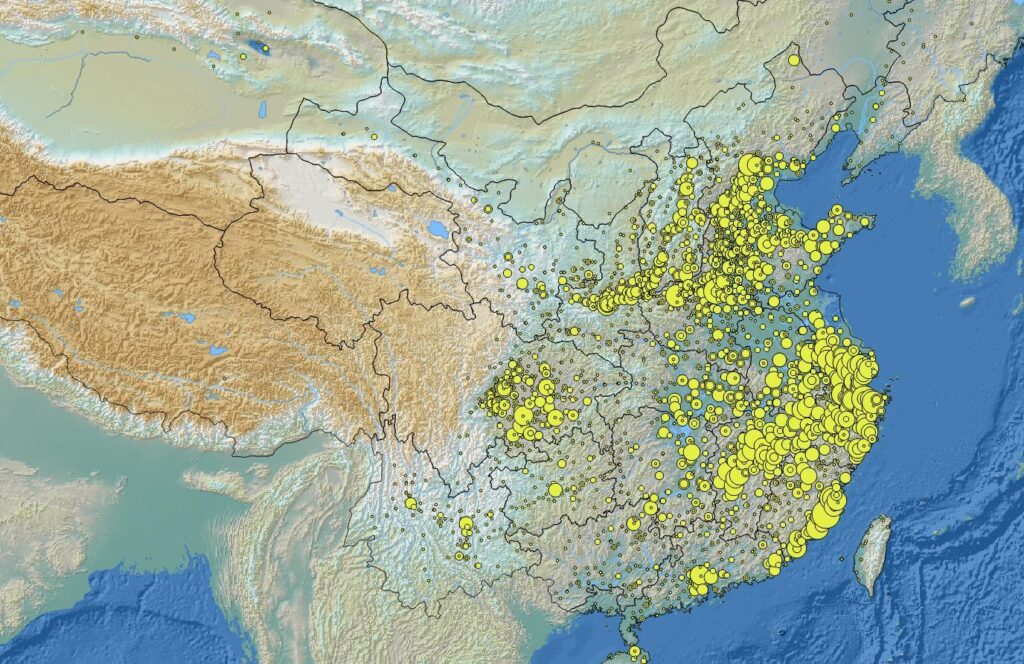China Biographical Database
The China Biographical Database is a freely accessible relational database with biographical information about approximately 515,488 individuals as of December 2021, primarily from the 7th through 19th centuries. With both online and offline versions, the data is meant to be useful for statistical, social network, and spatial analysis as well as serving as a kind of biographical reference. The image below shows the spatial distribution of a cross dynastic subset of 190,000 people in CBDB by basic affiliations (籍貫).

The CBDB project aims to increase the number of entries and make the data available free of charge, without restriction, for academic use. That data is regularly being enriched and new biographical entries are being created for Tang, Five Dynasties, Liao, Song, Jin, Yuan, Ming and Qing figures.
Originating with the work of Robert M. Hartwell (1932–1996), who bequeathed his estate, including the first version of this database, to the Harvard-Yenching Institute, CBDB is now a joint project of the Fairbank Center, the Institute of History and Philology of Academia Sinica, and the Center for Research on Ancient Chinese History at Peking University.
CBDB uses text mining and crowd sourcing to provide data that can be used with a number of different methodologies, from prosopography and GIS mapping to network analysis.
Professor Yuhua Wang’s monograph, The Rise and Fall of Imperial China: The Social Origins of State Development, for example, makes innovative use of CBDB data to map complex elite networks across Chinese dynasties.
You can keep up to date with CBDB’s latest work via our public events and blog series.


